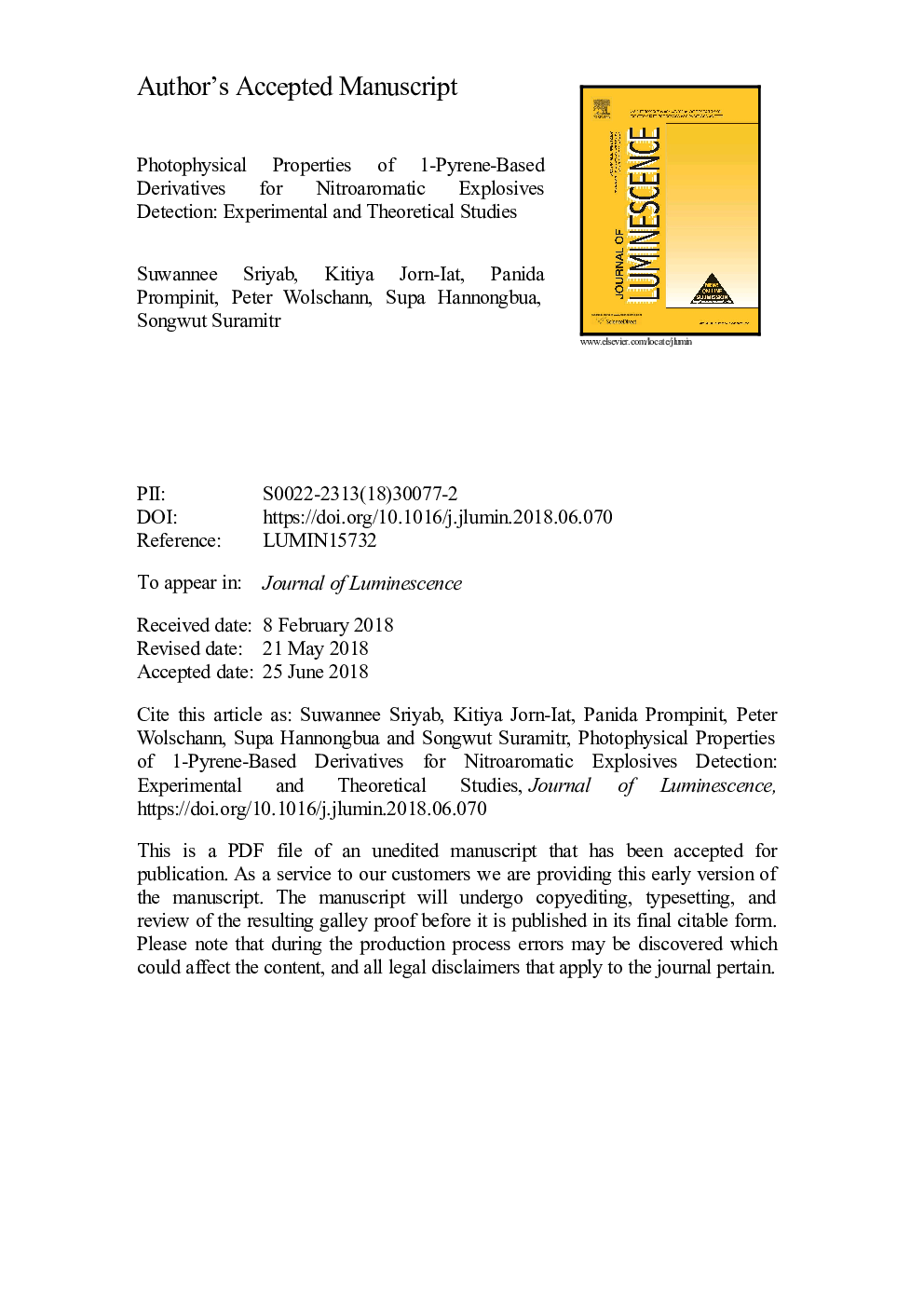| Article ID | Journal | Published Year | Pages | File Type |
|---|---|---|---|---|
| 7839761 | Journal of Luminescence | 2018 | 25 Pages |
Abstract
Novel pyrene-based derivatives, 4-(p-tolylethynyl)pyrene (Py-ET) and 9-(pyren-3-yl)-9H-carbazole (Py-CZ), were synthesized for application of nitroaromatic explosives detections. Introduction of groups into pyrene moieties resulted in a bathochromic shift in absorption and emission spectra. The fluorescence quantum yield varied between 0.26 and 0.44. Fluorescence quenching behavior of 1-pyrene-based derivatives for sensing of nitroaromatic explosives, which are 2,4-dinitrotoluene (DNT) and 2,4,6-trinitrotoluene (TNT), in dichloromethane solution was studied. It was found that the Py-ET had a higher sensitivity and quenching efficiency than Py-H and Py-CZ with detection limits of 2.32 and 3.09â¯ppm for DNT and TNT, respectively. This was explained by using theoretical studies with density functional theory (DFT) and time-dependent DFT (TD-DFT) calculations. It revealed that Py-ET was quenched by nitroaromatic explosives via intermolecular Ï-Ï interaction with highest binding energy and lowest energy gap. Most of electrons (>90%) were transferred from HOMO of the pyrene derivatives to the LUMO of quencher molecules during the quenching process.
Related Topics
Physical Sciences and Engineering
Chemistry
Physical and Theoretical Chemistry
Authors
Suwannee Sriyab, Kitiya Jorn-Iat, Panida Prompinit, Peter Wolschann, Supa Hannongbua, Songwut Suramitr,
